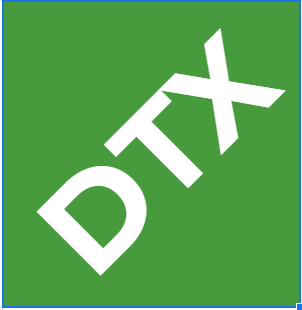GLOBAL MINIMUM TAX – BEPS PILLAR 2 TOP UP TAX SIMULATION
DaTaxan can support you with GLOBAL MINIMUM TAX SIMULATION TOOL to calculate the top-up tax, forecast the potential impact of global minimum taxation in different scenarios
1. What is global minimum tax?
Global minimum tax is a new taxing mechanism under which multinational enterprises (MNEs) are subject to 15% minimum corporate tax rate globally. Under Global anti-Base Erosion rules (GloBE Rules), a Top-up Tax can be imposed in a jurisdiction whenever the jurisdictional effective tax rate (ETR) is below the 15% minimum rate.
2. What is BEPS 2.0?
Base erosion and profit shifting (BEPS) refers to tax planning strategies that exploit gaps and mismatches in tax rules to make profits ‘disappear’ for tax purposes or to shift profits to locations where there is little or no real activity but the taxes are low, resulting in little or no overall corporate tax being paid. (source: OECD)
The OECD/G20 Inclusive Framework on BEPS has recently agreed a two-pillar solution to address the tax challenges arising from the digitalisation of the economy.
Pillar One
Pillar 1 applies to MNEs with global turnover above EUR 20 billion and profitability above 10% (i.e. profit before tax/revenue). This targets about 100 biggest and most profitable MNEs and re-allocates part of the profit to the countries where the consumers of their products and services are.
Pillar Two
Under Pillar 2, a large group of MNEs ( revenue higher than EUR 750 million) would be subject to the 15% global minimum corporate tax rate. These MNEs are also subject to Country by Country report (CbCr) rule under BEPS 1.0 program. Pillar 2 consists of:
- GloBE rules with below 2 interlocking domestic rules implemented through legislation enacted in adopting jurisdictions
- (i) IIR – Income Inclusion Rule: imposes top-up tax on a parent entity in respect of the low tax income of a constituent entity;
- (ii) UTPR – Undertaxed Payment Rule: denies deductions or requires an equivalent adjustment to the extent the low tax income of a constituent entity is not subject to tax under an IIR;
- STTR – Subject to Tax Rule: a treaty-based rule that allows source jurisdictions to impose limited source taxation on certain related party payments subject to tax below a minimum rate. The STTR will be creditable as a covered tax under the GloBE rules.
3. BEPS 2.0 Timeline
The timeline of the new global minimum tax rules is highly ambitious. The OECD and tax administrations are working hard to have these rules in place by 2023. Taxpayers therefore have limited time to prepare.
On Pillar 1, the new taxing right in respect of re-allocated profit (Amount A) will be implemented through a multilateral convention with potential effect in 2023. Works on Amount B and the in-country baseline marketing and distribution activities are expected to complete by the end of 2022.
As for Pillar 2, All G7 countries, the European Union, a number of G20 countries and many other economies have now scheduled plans to introduce the global minimum tax rules. An Implementation Framework to be released in late 2022 to facilitate implementation and co-ordination between tax administrations and taxpayers.
4. Impact of global minimum taxation – your challenges with OECD BEPS 2.0
These rules are likely to trigger changes in local country rules and rates, especially in those the countries that may lose tax income or business. They also create an additional burden for taxpayers and additional layers of calculations, compliance, and reporting.
The OECD has published GloBE Model Rules, BEPS Pillar Blueprint, GloBE Model Rules Commentary, and GloBE Model Rules Examples, fact sheets, frequently asked questions, and many press releases.
These underscore the complexity of the global minimum tax rules and the significant resource investment that in scope companies will need to prepare to be ready to comply with the new rules when they take effect in the coming months.
5. Simulation of the global minimum taxation BEPS Pillar 2 top up tax
MNEs should prepare themselves for these new rules and understand the potential impact to their organization’s tax liability. In order to assess how these rules will impact your organization, the best practice is to run an impact assessment in parallel. Such simulation will definitely add value when preparing for these new rules.
DaTaxan has developed an assessment tool to help MNEs simulate the impact of global minimum taxation – BEPS pillar 2 top up tax.
What capabilities does this tool offer?
- Automated calculation of jurisdiction-specific top-up taxes based on consolidated entity-level data.
- Assessment of eligibility for permanent safe harbor and substance-based carve-out, including consideration of transition periods.
- Flexibility to adjust top-up tax calculations in response to transitional safe harbor provisions.
- Simulation of top-up tax scenarios to evaluate the impact of changes in GLoBE income.
- An intuitive and interactive dashboard that visualizes the global minimum taxation impact, specifically BEPS Pillar 2 top-up taxes, across the entire Group on a global scale.
- Enhanced decision-making support through numerical analysis
Below is the tool with sample data for your free demo. Click here should you wish to install the App from Microsoft Appsource and use the tool with your own data to assess the impact to your business. We are happy to help!

Contact us
We are here to help. Pop in your details and we will contact you back.
or email us at: contact@dataxan.com
